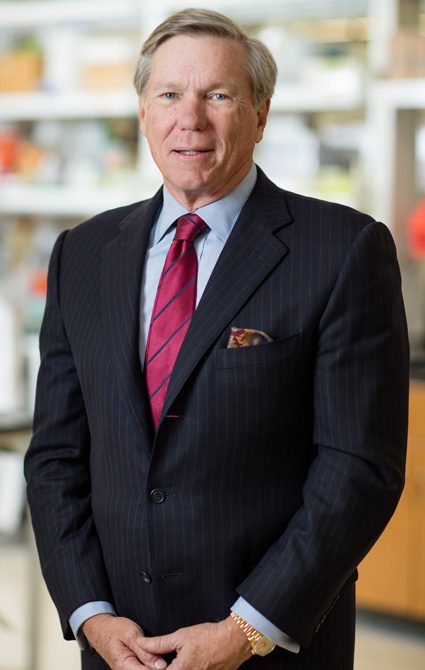
Dr. Stephen Prescott
Innovation is enigmatic, but you know it when you see it. As president of the Oklahoma Medical Research Foundation, Dr. Stephen Prescott is a major player in the effort to transform Oklahoma City into an innovation district. He’s charged with roping in the best and brightest medical researchers from around the world in the hopes of contributing to and capturing a synergy that will ignite new ideas, fuel new ways of thinking and, ultimately, lead to new ways of doing things – things that save lives.
“The idea behind such a district is to create an environment where people will interact. Those people will be drawn from different disciplines. For example, my own field would be biotechnology, but the district should have people interested in other types of endeavors, including other types of scientists, like those that will be at the GE Oil & Gas Technology Center. I also think it’d be wonderful to have companies interested in design and marketing in there, because, again, that helps everybody’s creativity and spurs innovation,” he says.
During his 10-year tenure at OMRF, Prescott has overseen the largest expansion in the nonprofit’s 70-year history. Raising more than $100 million, Prescott’s made it possible to recruit dozens of new scientists. He’s currently focused on bringing in new recruits for OMRF’s heart disease, arthritis and aging programs. He’s also made it possible for the organization to build its research tower. Crowned by 18 wind turbines, it’s home to the world’s largest rooftop wind farm.
Innovation is key to OMRF’s mission; the organization makes it possible for more people to live longer, healthier lives. OMRF is tackling old problems – heart disease, stroke, cancer, severe arthritis and neurological illnesses such as multiple sclerosis and Alzheimer’s– with new ways of thinking. And it’s paying off. Medications discovered and developed at OMRF have made their ways into every clinic and hospital around the world.
The organization saw some big wins in 2015. One of OMRF’s scientists sequenced the genes responsible for a variety of devastating birth defects. Eradicating the defects will be another problem altogether, but at least now scientists and doctors know where to start. The scientists in the aging project turned out some critical studies of Lou Gehrig’s Disease.
OMRF’s future plans include aggressive recruiting. Prescott stresses, however, that with the Oklahoman economy functioning less than optimally, the organization’s being prudent with its efforts. Historically, though, the organization has found that it gets an exponential return on innovation when more people are added to the mix. And, while most people outside the state may not grow up with Oklahoma on their wish list of places to live, once they visit, they tend to like it.
“Scientists are actually very pragmatic people,” Prescott says. “They’re not ivory tower types. That caricature is incorrect. They’re looking for circumstances in which they can be successful. What we have to offer is that this is a great opportunity for success.”
Space is cheaper in Oklahoma than in larger cities and older, more established universities. This gives OMRF the opportunity to offer potential recruits larger, better stocked laboratories. In other words, bigger playgrounds with more and better toys. And who doesn’t love toys? And more toys combined with more colleagues equals more innovation and more success.
OMRF will continue to grow. It will continue to innovate. And it will see more success. That’s the vision that was presented to Prescott when he was recruited, and it’s the path he’s sticking to. Innovation is where he does his best work.
“At a certain time in your life, you realize that you have some skills more than others. Mine are where there are new challenges. That’s when I function best. I need a place with a vision that we’re going to do things differently and grow and expand. It’s a perfect fit,” he says. – Paul Fairchild























